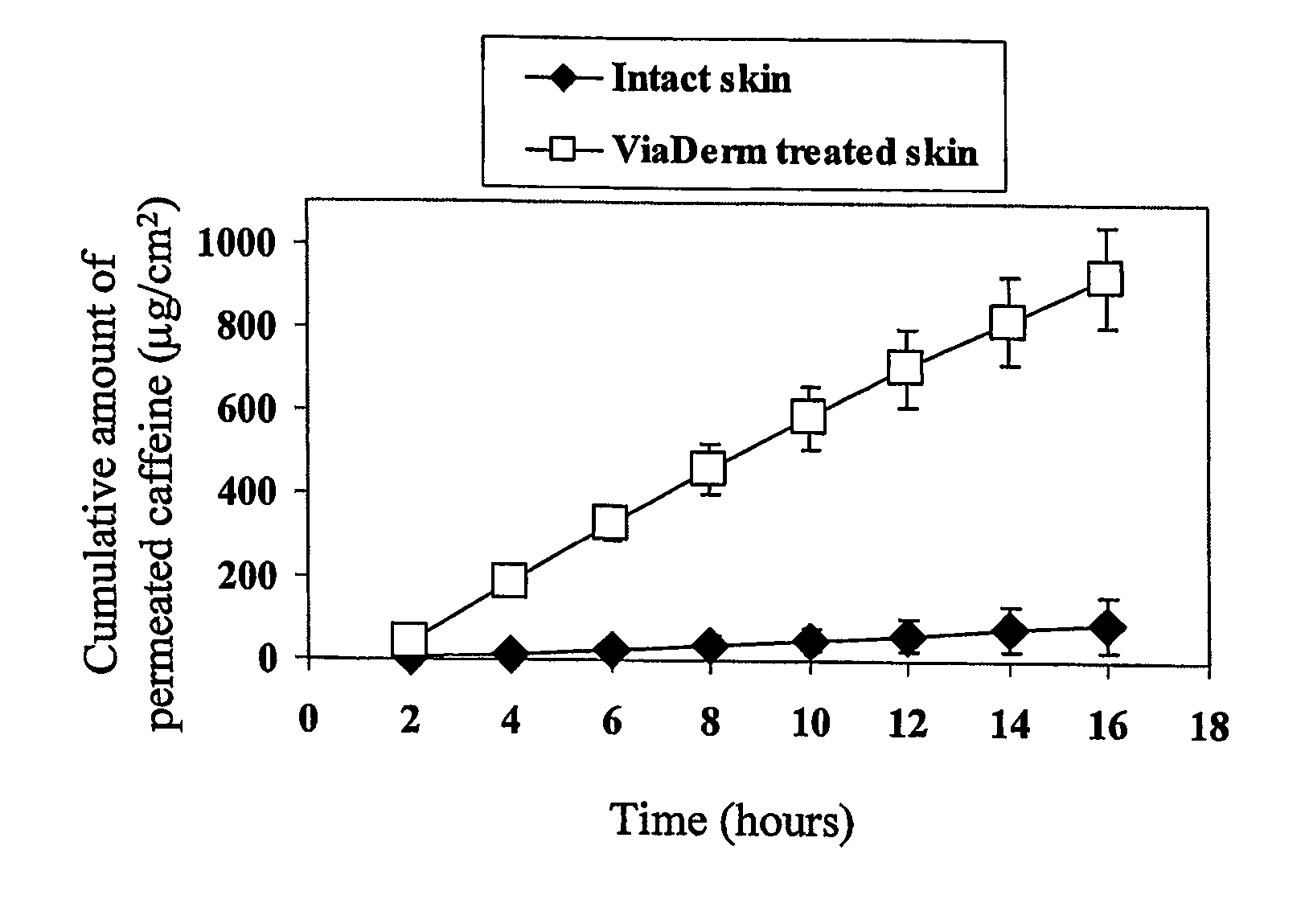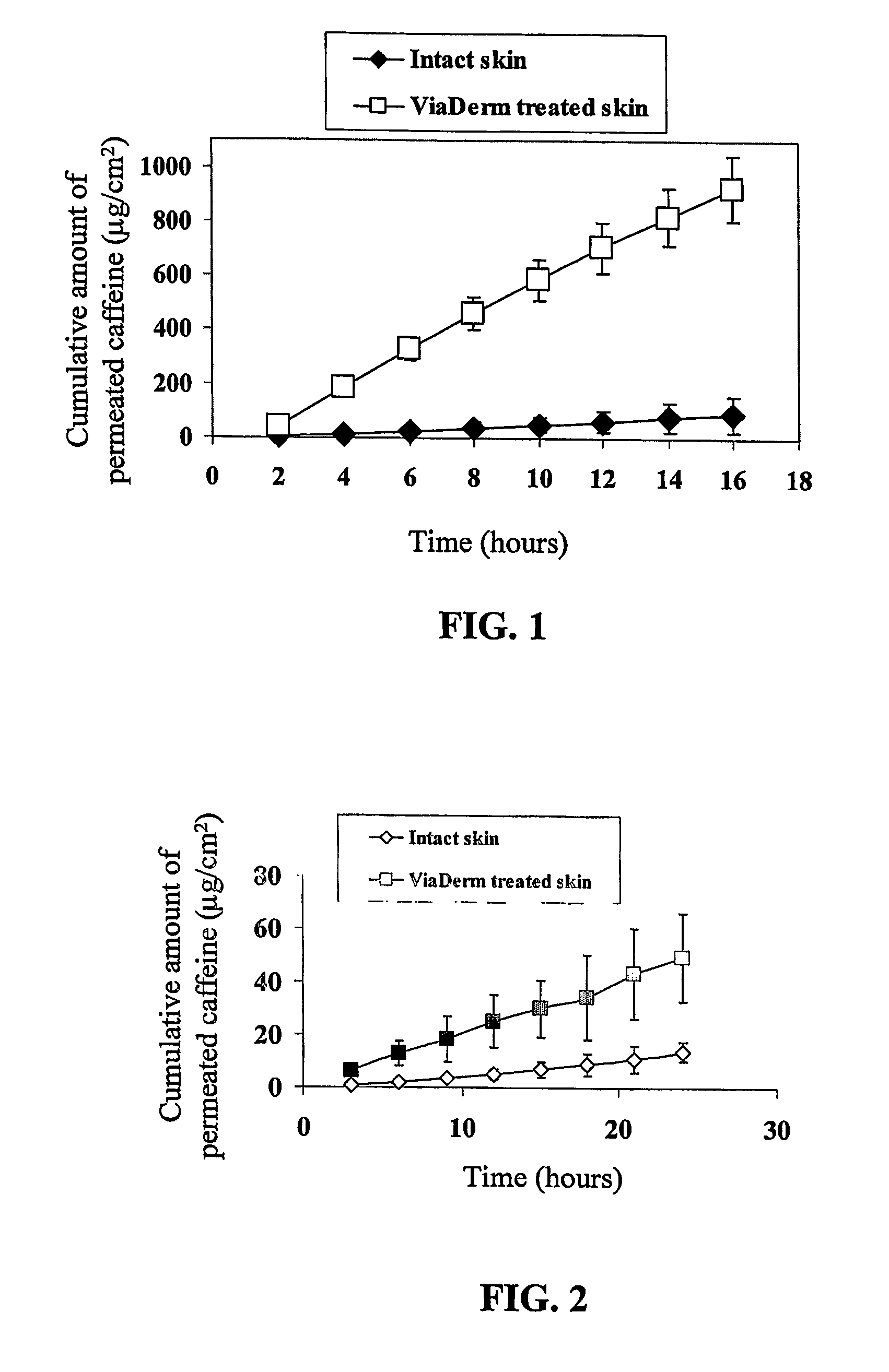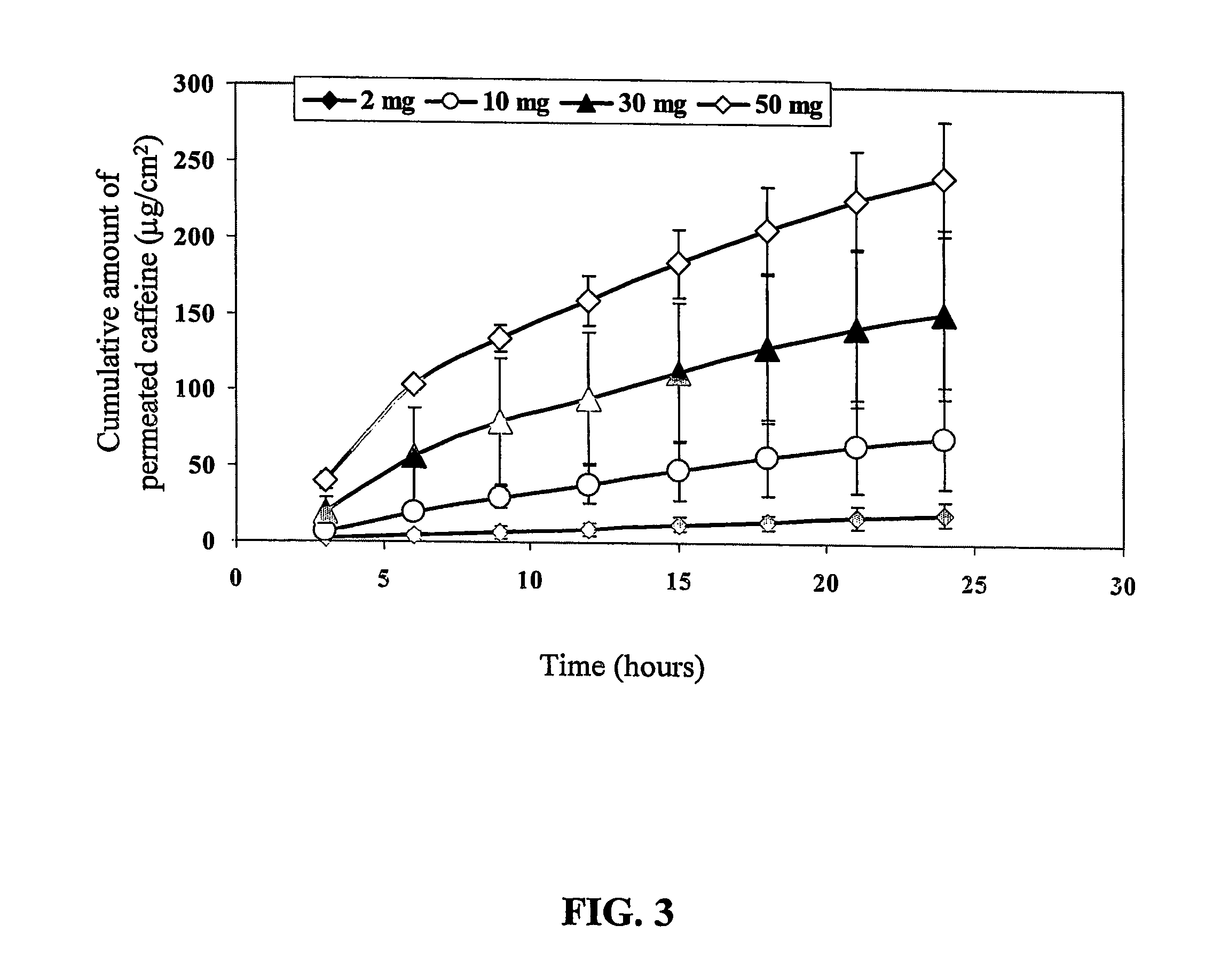Transdermal Delivery System for Cosmetic Agents
a delivery system and cosmetic agent technology, applied in the field of intradermal or transdermal delivery system, can solve the problems of insufficient effectiveness of methods and apparatuses, inability to deliver multiple drugs at the same time, and inability to achieve the effect of improving skin condition
- Summary
- Abstract
- Description
- Claims
- Application Information
AI Technical Summary
Benefits of technology
Problems solved by technology
Method used
Image
Examples
example 1
In Vitro Permeation Study of Caffeine
[0150] The cumulative permeability and permeation efficacy of caffeine from an aqueous solution or from commercially cosmetic gels through ViaDerm treated porcine skin or through intact porcine skin was evaluated. The permeation efficacy is defined as the % of penetrated agent out of total amount of the agent applied on the skin.
Caffeine Solution
[0151] The permeation of caffeine from caffeine solution through ViaDerm treated porcine skin was compared to that of intact skin.
[0152] Caffeine was purchased from Sigma. Caffeine solution (0.25 ml of 1% w / v) was pipetted into the donor chambers.
[0153]FIG. 1 shows the caffeine cumulative permeability through ViaDerm treated porcine shin compared to intact skin. As shown in FIG. 1, skin cumulative permeability of caffeine was enhanced following pretreatment with the ViaDerm in comparison to untreated control skin.
[0154] Caffeine flux through pretreated skin reached a plateau of 18.5±2.2 μg / ml after...
example 2
In Vitro Skin Permeation Study of Salicylic Acid
Salicylic Acid in Solution
[0166] Salicylic acid was obtained from Carlo Erba (Milan, Italy). Salicylic acid solution (0.25 ml of 0.5% w / v in PBS containing 10% ethanol) was freshly prepared and pipetted into the donor chambers. Acceptor medium for the diffusion chambers was 1% Volpo S-20 (Croda; North Humberside, England) in PBS.
[0167] The permeation of salicylic acid from salicylic acid solution through ViaDerm treated skin was compared to that of intact skin.
[0168] The skin permeability of salicylic acid from salicylic acid solution was enhanced following pretreatment with ViaDerm in comparison to the permeability of the untreated control skin (FIG. 5). The total permeated amount after 24 hr in ViaDerm treated skin was 820 μg / cm2 in comparison to 84 μg / cm2 obtained for the control untreated skin group. The permeation efficacy was 62% and 4% in ViaDerm treated and untreated skin after 24 h, respectively. The differences in the pe...
example 3
In Vitro Skin Permeation of Hydroquinone
Hydroquinone in Solution
[0171] Hydroquinone was obtained from Aldrich (Germany). Hydroquinone solution at a concentration of 2% in PBS was freshly prepared. Acceptor medium for the diffusion chambers was PBS at pH=7.4.
[0172] Hydroquinone solution (0.25 ml of 2% w / v) was pipetted into the donor chambers. The permeation of the hydroquinone solution through ViaDerm treated skin was compared to that of intact skin.
[0173] The skin permeability of hydroquinone solution was enhanced following pretreatment with ViaDerm in comparison to the permeability of the untreated control skin (FIG. 7). The total permeated amount after 24 hr in ViaDerm treated skin was 1824 μg / cm2 in comparison to 62 μg / cm2 obtained for the control untreated skin group. The permeation efficacy was 27% and 1% in ViaDerm treated skin and untreated skin after 24 h, respectively. The differences in the permeated amount decreased with time and were between 39 (at 3 hr time point)...
PUM
| Property | Measurement | Unit |
|---|---|---|
| solubility | aaaaa | aaaaa |
| depth | aaaaa | aaaaa |
| diameter | aaaaa | aaaaa |
Abstract
Description
Claims
Application Information
 Login to View More
Login to View More - R&D
- Intellectual Property
- Life Sciences
- Materials
- Tech Scout
- Unparalleled Data Quality
- Higher Quality Content
- 60% Fewer Hallucinations
Browse by: Latest US Patents, China's latest patents, Technical Efficacy Thesaurus, Application Domain, Technology Topic, Popular Technical Reports.
© 2025 PatSnap. All rights reserved.Legal|Privacy policy|Modern Slavery Act Transparency Statement|Sitemap|About US| Contact US: help@patsnap.com



